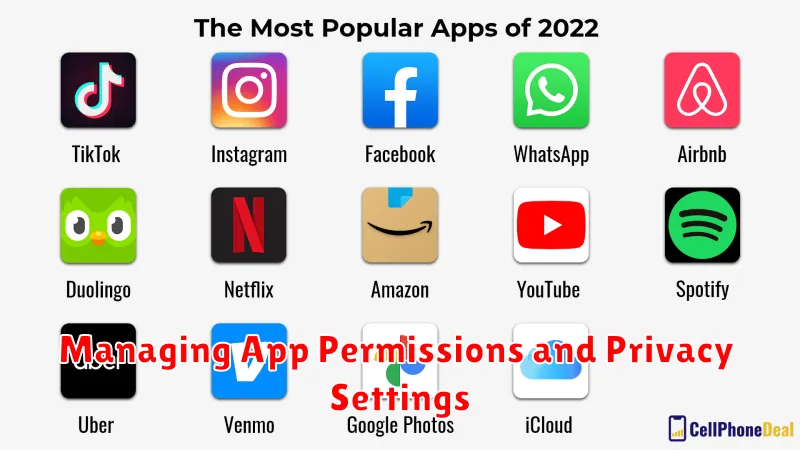In today’s increasingly digital world, mobile devices have become indispensable tools for staying connected, accessing information, and managing daily life. For seniors, these devices can be particularly valuable, enabling them to maintain independence and easily communicate with family and friends. However, this increased connectivity also brings increased risks, making mobile security a vital concern. Protecting our loved ones from online threats is paramount, and this necessitates understanding the specific mobile security challenges seniors face. This article addresses essential mobile security tips for seniors, providing practical advice on how to safeguard their devices and personal information from scams, malware, and other digital dangers. Understanding these essential mobile security tips can empower seniors to confidently navigate the digital landscape while staying protected.
Navigating the complexities of mobile security can be daunting, especially for those less familiar with technology. This guide offers clear and concise steps to bolster mobile security for seniors. We will cover key aspects of protecting their devices, including creating strong passwords, recognizing phishing scams, managing app permissions, and understanding the importance of software updates. By implementing these essential mobile security tips, family members can play a crucial role in helping seniors stay safe online, ensuring their digital well-being and peace of mind. This knowledge is crucial for protecting our loved ones from the increasing prevalence of online threats targeting seniors.
Understanding the Importance of Mobile Security for Seniors
In today’s digital age, mobile devices have become essential tools for communication, information access, and managing daily life. For seniors, these devices can offer a vital connection to family, friends, and essential services. However, this increased reliance on mobile technology also brings potential security risks.
Seniors can be particularly vulnerable to online threats due to factors like unfamiliarity with technology or declining cognitive abilities. Protecting their personal information, financial data, and overall well-being requires a proactive approach to mobile security.
Cybercriminals often target seniors, exploiting their trust and potential lack of technical expertise. The consequences of a security breach can be devastating, ranging from financial loss and identity theft to emotional distress and privacy violations. Therefore, understanding the importance of mobile security is the first step in safeguarding seniors against these potential harms.
Creating Strong, Unique Passwords and Managing Them Securely
Strong passwords are the first line of defense against unauthorized access. A strong password should be at least 12 characters long and include a mix of uppercase and lowercase letters, numbers, and symbols.
Avoid using easily guessable information like birthdays, pet names, or addresses. Each online account should have a unique password. Reusing passwords across multiple platforms increases vulnerability. If one account is compromised, all accounts using the same password are at risk.
Consider using a password manager. These tools generate and store complex passwords, eliminating the need to memorize them. Reputable password managers encrypt your password vault, adding an extra layer of security.
Never write down your passwords on paper or store them in easily accessible files on your phone. If you must write them down, keep them in a secure location.
Identifying and Avoiding Phishing Scams and Malicious Links
Phishing scams are deceptive attempts to steal personal information like usernames, passwords, and credit card details. These scams often arrive via text message or email, disguised as legitimate communications from banks, government agencies, or other trusted organizations.
Recognize the signs. Phishing messages frequently exhibit poor grammar and spelling. They may create a sense of urgency, pressuring recipients to act quickly. Beware of requests for personal information; legitimate organizations rarely ask for sensitive data via email or text.
Verify the source. If a message appears to be from a known organization, contact that organization directly through their official website or phone number to confirm its authenticity. Do not click on links or reply to the suspicious message.
Exercise caution with links. Avoid clicking on links in unsolicited emails or texts. If you must click a link, carefully examine the URL. Ensure it matches the legitimate website address of the organization it claims to represent. Shortened URLs can be particularly deceptive.
Protecting Against Malware and Viruses on Mobile Devices
Malware and viruses pose significant threats to mobile devices, potentially compromising personal information and disrupting functionality. Seniors can take proactive steps to safeguard their phones and tablets.
First, it’s crucial to only download apps from official app stores like Google Play Store for Android and the App Store for Apple devices. Avoid downloading apps from unknown sources or third-party websites.
Regularly updating the operating system and apps is vital. Updates often include security patches that address vulnerabilities exploited by malware.
Install reputable antivirus software designed for mobile devices. These apps can scan for and remove malware, providing an extra layer of protection.
Exercise caution when clicking on links or attachments received via text message or email, even if they appear to be from a trusted source. These could contain malware disguised as harmless content.
Managing App Permissions and Privacy Settings

Mobile apps often request access to various features and data on our devices, such as location, contacts, and camera. It’s crucial to understand these permissions and manage them carefully.
When installing a new app, take a moment to review the permissions it requests. Ask yourself if the app genuinely needs access to the requested information to function properly. If a game requests access to your contacts, it likely doesn’t need it and you should deny the permission.
Restricting unnecessary permissions helps protect your privacy and security. Most devices allow you to review and adjust app permissions even after installation. Navigate to your phone’s settings and look for the “Apps” or “Applications” section. From there, you can select individual apps and manage their permissions.
In addition to app permissions, review the privacy settings within individual apps and on your device overall. Regularly reviewing and updating these settings is a good practice to maintain control over your data.
Securing Wi-Fi Connections and Avoiding Public Networks
Protecting seniors’ mobile devices starts with securing their Wi-Fi connections. Strong passwords are essential. Encourage them to use a combination of uppercase and lowercase letters, numbers, and symbols, and avoid easily guessable passwords like birthdays or names. A password manager can be helpful for generating and storing complex passwords.
Public Wi-Fi networks, often found in coffee shops or airports, pose a significant security risk. Avoid using public Wi-Fi for sensitive activities like online banking or accessing personal accounts. If public Wi-Fi must be used, advise them to utilize a Virtual Private Network (VPN). A VPN encrypts internet traffic, adding a layer of security.
At home, ensure the Wi-Fi network is secured with WPA2 or WPA3 encryption. These encryption protocols provide a strong defense against unauthorized access. Check the router settings to confirm the correct encryption is enabled and change the default network name (SSID) to something unique.
Utilizing Built-in Security Features Like Find My Phone

Modern smartphones come equipped with essential security features designed to protect your device and data. One such crucial feature is “Find My Phone” (or similar tools depending on the operating system). This functionality allows you to remotely locate, lock, or even erase your phone if it’s lost or stolen.
Enabling this feature is a simple yet vital step. Typically, it’s found in the settings menu under “Security” or “Privacy.” Once activated, you can log into a linked account from another device to access these features. Locating your phone helps if it’s simply misplaced, while the lock feature prevents unauthorized access. In the unfortunate event of theft, the erase option safeguards your personal information.
Familiarize yourself with how to activate and use “Find My Phone”. Knowing how to quickly access these tools can significantly increase the chances of recovering a lost device or protecting sensitive information. Consider practicing using the feature with a family member or friend to ensure you understand how it works.
Keeping Software Updated and Backing Up Important Data
Regular software updates are crucial for mobile security. These updates often include patches for newly discovered security vulnerabilities. Encourage your loved ones to enable automatic updates whenever possible. This ensures their devices receive the latest protection without requiring manual intervention.
Data backup is equally important. Losing a phone can be devastating, but losing precious photos and memories can be even worse. Explain the importance of backing up photos, videos, contacts, and other important files. Cloud services offer a convenient way to back up data automatically. Alternatively, show them how to back up to a computer.
Key takeaway: Regular software updates and data backups are essential for protecting valuable information and ensuring the device remains secure.
Seeking Help and Support for Mobile Security Concerns
Seniors sometimes encounter challenges with mobile security that require external assistance. Knowing where to turn for reliable support is crucial.
Family members can play a key role in assisting seniors with their mobile security. Taking the time to explain security concepts in clear, simple terms can make a significant difference. Offering hands-on help with tasks like setting up security software or adjusting privacy settings can also be invaluable.
Device manufacturers often provide customer support channels specifically for addressing security concerns. Contacting these support lines can provide seniors with tailored guidance for their specific device. Additionally, many reputable online resources offer helpful guides and tutorials on various aspects of mobile security.
For more complex issues, seeking professional tech support might be necessary. Local computer repair shops or dedicated tech support services can provide expert assistance with troubleshooting security problems and implementing robust protective measures.
Remember to emphasize the importance of seeking help from trusted sources to avoid scams or misinformation. Being proactive in seeking support can help seniors maintain a secure mobile experience.

